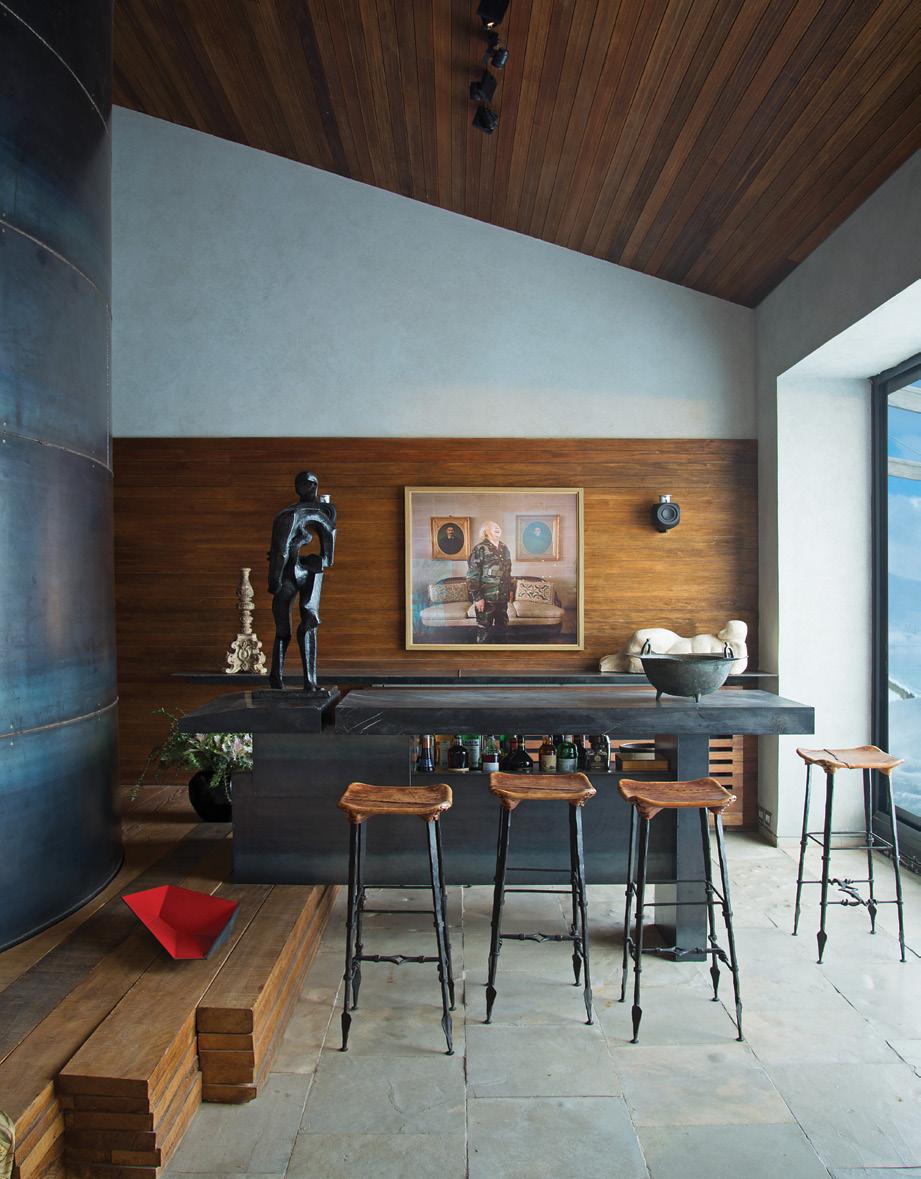
4 minute read
Products
Make it pop!
A round-up of the latest objects, lighting pieces and accessories we love - from MENU's adjustable candle holders to Bang & Olufsen's moveable home speakers
Perla Ana Kraš for HAY Design Available at hay.dk
7 1

2
5
6 3

1. Red LM Stool by nmbello studio. Available at lichennyc.com . 2. Beosound Level by Torsten Valeur for Bang & Olufsen. Available at bang-olufsen.com 3. Bacio scented candle by Fornasetti. Available at ounass.ae4. Duca candle holder by Kroyer-Saetter-Lassen for MENU. Available at menuspace.com5. TRN Lamp F2 by Pani Jurek. Available at adorno.design 6. Medium Swirl stripe notebook by Paul Smith. Available at matchesfashion.com7. Multicolour alpaca and mohair large check scarf by Acne Studios. Available at ssense.com
Design is collectible. But what kind of collector do you want to be?
Reflections on design by Cyril Zammit
While the art market is already established, questions around collectable design are still being raised. The UBS Global Art Market 2020 report indicates that global sales of art and antiques reached an estimated USD 64.1 billion in 2019. There is no such estimation for design, though one now knows that High Net Worth (HNW) collectors are also looking at alternative investments, and 78 percent of them purchase decorative art and design.
So, is design collectible? And if yes, what is collectible and is it a good investment?
Before we try to answer these questions, let’s first look back and draw a timeline of modern and contemporary design.
A century ago, design was an element created by architects to complement their projects. There was no distinction between design and architecture, and all great architects – including Charles Rennie Mackintosh, Ludwig Mies van der Rohe and Le Corbusier, to name a few – were creating furniture as part of their overall projects. After the Second World War, architects such as Jean Prouvé hit the light for their inventive and cost-effective design creations that were supporting the reconstruction of Europe.
It was only in the early 1950s that a new generation of designers made an appearance. They were still architects, but they developed projects that didn’t necessarily associate with housing or buildings. This trend developed until the early ‘80s, when a few galleries decided to extract design from its mission of pure functionality, and approached designers to work on limited edition pieces in order to offer a buyers a sentiment of uniqueness and rarity.
A decade later, auction houses opened their design sections and started to put design pieces under the hammer. They followed with interest the hard work of a few galleries in Paris, London or New York that promoted new talents alongside the great names from the 20th century. In 2005, design.05 in Miami kicked off the design fair movement. Rebranded Design Miami a year later, the fair opened the doors to a rising market looking at fine design, later moving to ‘design-art’ – a notion I personally don't like.
So, what is collectible design? The easiest definition is a creation that is rare with outstanding craftsmanship, innovative through its material or form, and a ground-breaking concept that will mark history. To this, one can add architectural historical design looked after for its rarity, although some of it was produced in larger quantities.
To me, it is important that the purchase of a design piece is driven by the heart more than a return on investment. A design creation is a living element in your house, not something you will store. Never forget that design has a function, and you should always be able to use what you buy. If not, then it is a ‘design-art’ piece that you put on a pedestal and look at, the same way you would with a painting – not my preferred way of appreciating design. On rare occasions, you will also find design pieces that are more affordable than art.
If you are interested in buying a historical piece, learn about its history: to whom did it once belong? Touch it, feel it and connect with its soul. Art buyers will make sure that they not only acquire great artworks for their walls, but also an outstanding line-up of furniture and design for their homes, too. That was a statement made by art dealer and auctioneer Simon de Pury during a talk I organised in Basel in 2008.
When it comes to contemporary design, look at the creativity of the piece, the material used, its finishing and how you can see yourself with this piece in 10 to 15 years. More eager buyers will also look for market added-value in the case of resale, so only purchase certified limited editions to avoid fakes and duplicates. Buying from a gallery will give you a guarantee that the designer has been properly vetted by the seller, and offer a certain assurance of value growth.
A collector will always firstly buy from the heart. Keep this rule as your first motivation.











